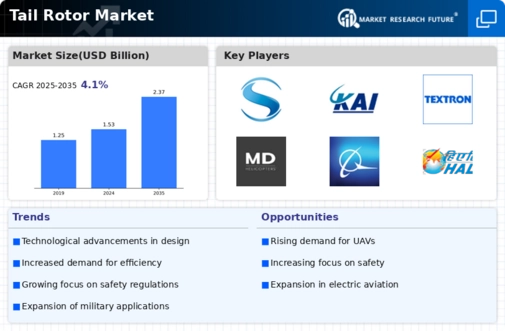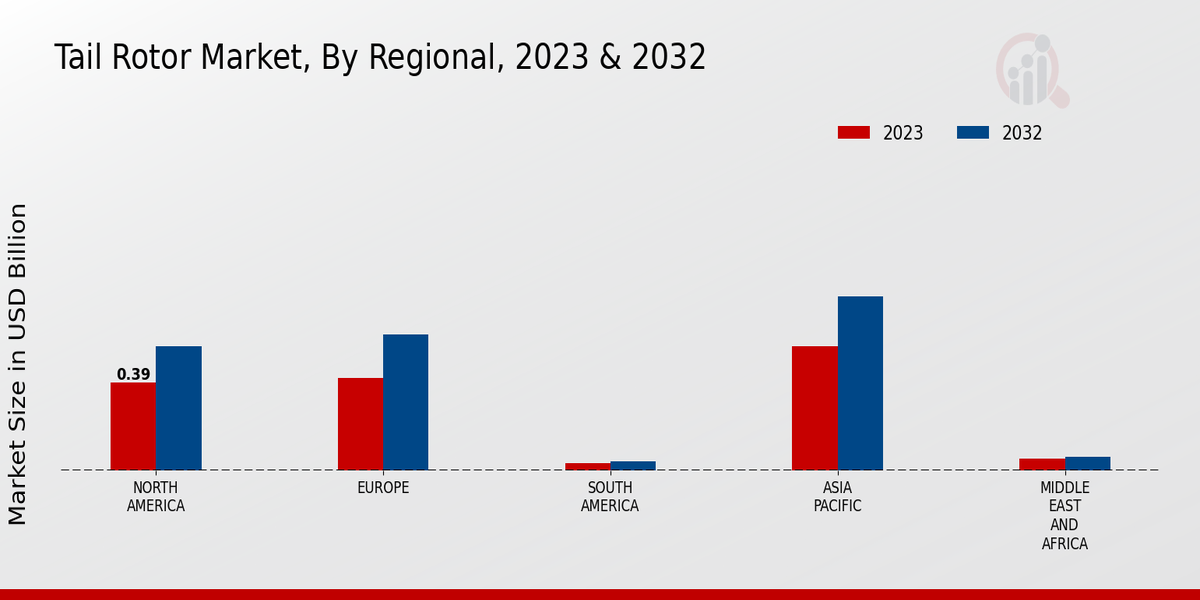Market Trends and Projections
Emerging Markets and Urban Air Mobility
Emerging markets are becoming increasingly influential in the Global Tail Rotor Market Industry, particularly with the rise of urban air mobility solutions. As cities expand and traffic congestion worsens, the demand for efficient aerial transportation options is growing. Helicopters equipped with advanced tail rotors are poised to play a crucial role in urban air mobility initiatives, providing quick and reliable transportation solutions. This shift towards aerial commuting is expected to drive innovation in tail rotor technology, as manufacturers seek to develop systems that cater to urban environments. The potential for growth in this segment suggests a dynamic future for the tail rotor market.
Increasing Demand for Helicopter Services
The Global Tail Rotor Market Industry experiences a notable surge in demand for helicopter services across various sectors, including emergency medical services, law enforcement, and tourism. This trend is driven by the growing need for rapid transportation and aerial support in urban areas. As a result, the market is projected to reach 1.53 USD Billion in 2024, reflecting a robust growth trajectory. The increasing reliance on helicopters for time-sensitive operations underscores the importance of efficient tail rotor designs, which enhance maneuverability and safety. Consequently, manufacturers are focusing on innovative tail rotor technologies to meet the evolving demands of the aviation sector.
Regulatory Compliance and Safety Standards
The Global Tail Rotor Market Industry is significantly influenced by stringent regulatory compliance and safety standards imposed by aviation authorities worldwide. These regulations necessitate continuous improvements in tail rotor designs to enhance safety and reliability. Manufacturers are compelled to invest in research and development to meet these evolving standards, which often leads to the introduction of advanced materials and technologies. As safety remains a paramount concern, the industry is likely to witness increased demand for tail rotors that comply with international safety regulations. This focus on compliance not only ensures passenger safety but also fosters consumer confidence in helicopter services.
Technological Advancements in Rotor Design
Technological advancements play a pivotal role in shaping the Global Tail Rotor Market Industry. Innovations in rotor design, materials, and manufacturing processes contribute to enhanced performance and efficiency. For instance, the introduction of composite materials has led to lighter and more durable tail rotors, improving overall helicopter performance. These advancements not only reduce operational costs but also enhance safety features, which are critical in the aviation industry. As the market evolves, the integration of smart technologies and automation in rotor systems is anticipated to further propel growth, aligning with the projected CAGR of 4.07% from 2025 to 2035.
Growth in Military and Defense Applications
The Global Tail Rotor Market Industry is witnessing substantial growth driven by the increasing demand for military and defense applications. Helicopters are integral to modern warfare, providing critical support in reconnaissance, transport, and combat operations. The need for advanced tail rotor systems that enhance agility and performance in challenging environments is paramount. As military budgets expand globally, investments in helicopter fleets are expected to rise, further bolstering the tail rotor market. This trend is indicative of a broader shift towards modernization and technological upgrades within defense sectors, which could lead to a market valuation of 2.37 USD Billion by 2035.

















